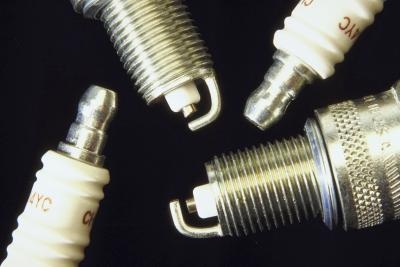
Edmond Berger invented the first known spark plug in 1839. As automobiles advanced throughout the years, so have spark plugs. Some of the advancements spark plugs have gone through include multiple ground electrodes, platinum-coated electrodes and iridium-tipped electrodes. Replacing the spark plugs in any vehicle is a part of basic maintenance. There are three main signs to look for indicating it is time to replace your spark plugs.
A rough running vehicle vibrates on idle or accelerates at a slower rate than normal. This condition can mean spark plug fouling or the gap is too wide. To check if the spark plugs are the problem, remove the plugs and check the gap between the electrodes on the spark plugs or inspect the plugs for build-up -- fouling -- on the electrodes.
With fuel prices steadily rising, it is important to monitor your car's fuel economy. If you notice a significant drop in fuel mileage, spark plugs may be the root cause. When the spark plug gap becomes too wide or fouled, the spark is not hot enough to burn the fuel-air mixture efficiently. This causes a sharp decrease in fuel economy.
One of the toughest jobs the spark plugs perform is to start the engine. If the spark is too cold, due to excessive gap or fouling, the vehicle may crank more than usual before it starts. Starting a cold engine magnifies this hard-starting symptom.
To check the spark plug gap, first remove the spark plugs from the engine. Once removed, use a feeler gauge or a spark plug gap tool to check the width of the gap between the center and ground electrodes on the engine side of the spark plugs. Most automobiles have an acceptable range of gap listed in the owner's manual. If any of the spark plugs have an incorrect gap, replace the entire spark plug set. Some spark plugs are adjustable, but adjusting the gap requires a steady hand and it's typically easier to replace them.